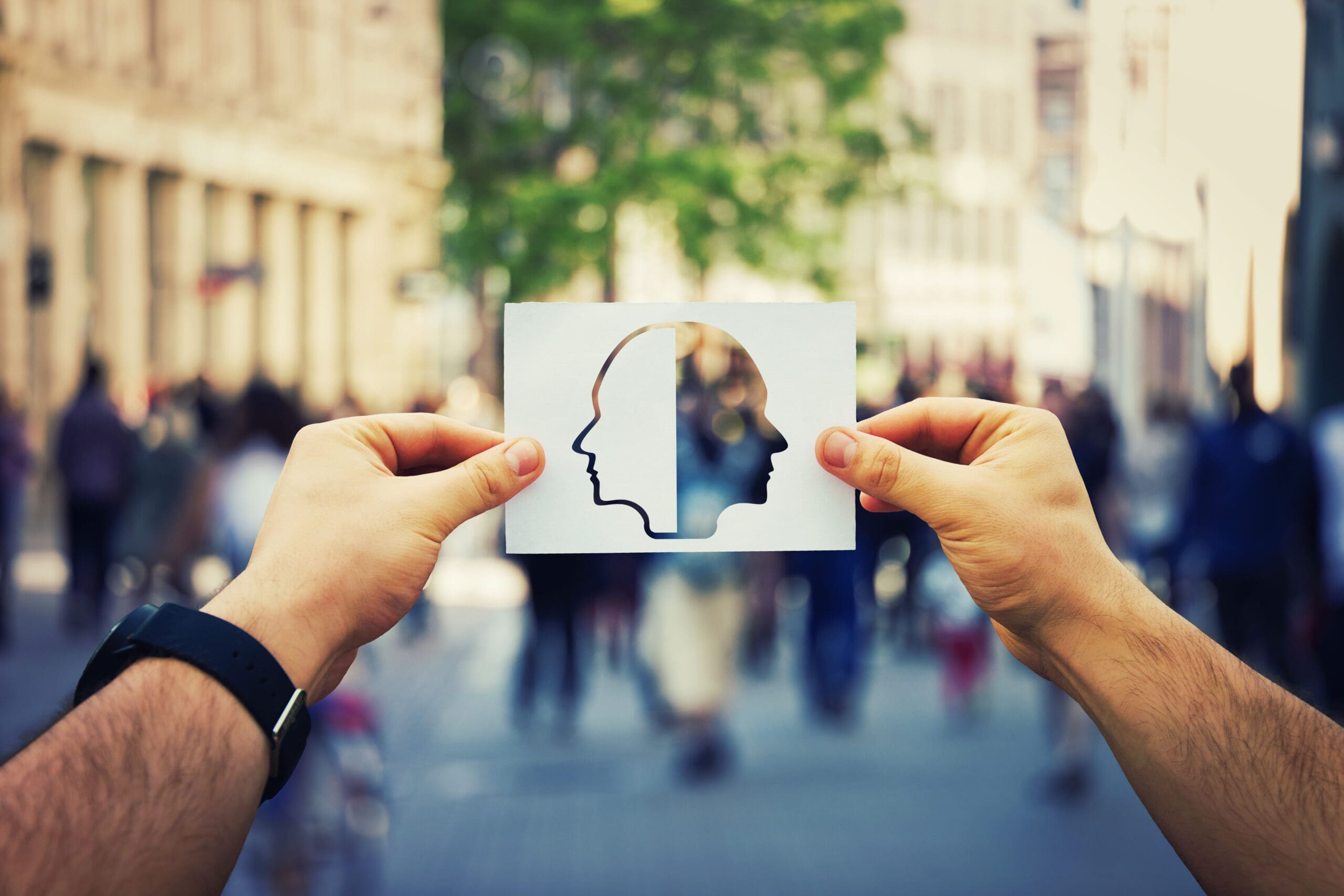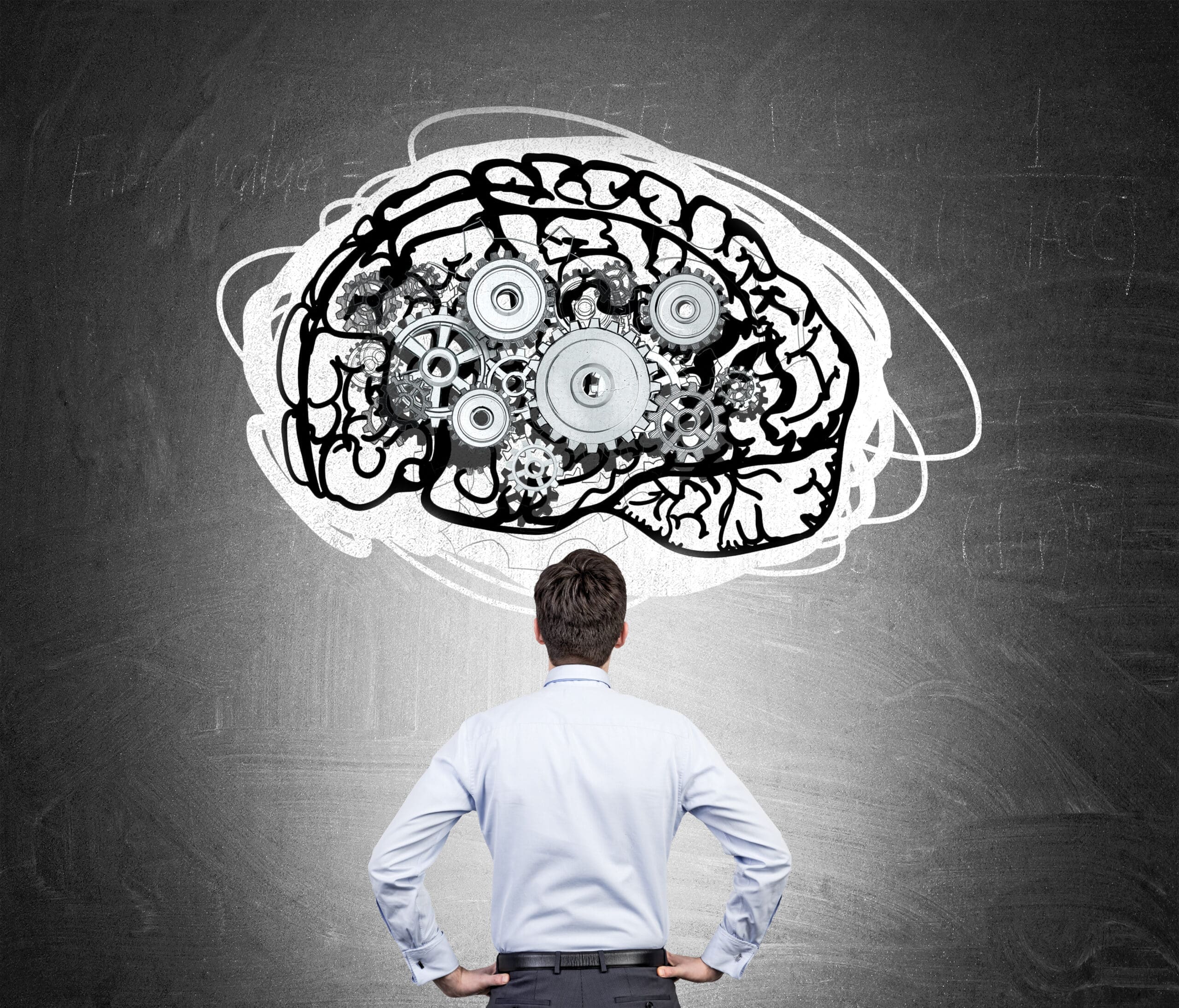In this post
What shapes our thoughts, feelings and behaviours? According to psychodynamic theory, the answers lie in the depths of the unconscious mind. This theory is a cornerstone of psychological science and delves into the intricate workings of the mind.
Psychodynamic theory is rooted in Sigmund Freud’s work on psychoanalysis. It emphasises the role of unconscious processes, early childhood experiences, hidden desires, and unresolved conflicts in shaping our behaviour and personality. It provides a comprehensive framework for understanding the complexities of human behaviour.
Freud’s theory revolutionised the understanding of human psychology and has evolved, but it continues to influence the field. Here, we will explain this theory in further detail, along with its origins, key concepts and applications.
What Is Psychodynamic Theory?
According to Teater (2015):
“Psychodynamic theories focus on the psychological drives and forces within individuals that explain human behaviour and personality. The theories originate from Sigmund Freud’s psychoanalysis, which focused on the unconscious mind as the source of psychological distress and dysfunction.”
Psychodynamic theory is a psychological approach developed in the late 19th and early 20th centuries by Sigmund Freud, and it emerged from his pioneering work on the unconscious mind. He emphasised the role of unconscious drives, early childhood experiences and internal conflicts in shaping current feelings, personality and behaviour. He introduced the concept of the psyche being divided into three parts, the id, ego and superego, and proposed that personality develops through various psychosexual stages.
The approach seeks to uncover and understand the root causes of psychological issues rather than just treating symptoms. It explores an individual’s unconscious thoughts, past experiences, unresolved conflicts and traumas that may affect their current behaviour and mental health. They can achieve deeper self-understanding and emotional healing by bringing these unconscious elements into conscious awareness. It can be used to address a wide range of psychological issues, including depression, anxiety, trauma and relationship problems.

Key Concepts of Psychodynamic Theory
The psychodynamic theory is composed of key concepts, including the unconscious mind, the id, ego and superego, defence mechanisms and psychosexual stages of development.
The unconscious mind
According to Freud, unconscious desires, thoughts and memories drive much of our behaviour. These can stem from early childhood experiences and are often influenced by repressed thoughts, memories and desires that are not within conscious awareness.
Freud’s theory of the conscious mind and subsequent theories have proposed three levels of consciousness (Good Thoughts Counselling & Coaching):
Conscious
- The part of our mind we are currently aware of at any given moment.
- It includes our thoughts, perceptions and everyday awareness.
- Think of it as the tip of an iceberg – visible and accessible. Cherry (2022) has further information on the iceberg metaphor here.
Preconscious
- This layer contains information, thoughts and memories that are not currently part of our conscious awareness but can be easily brought to consciousness.
- Think of it as the part of the iceberg just below the water’s surface, which can be revealed with little effort.
- For example, you might not be currently thinking about your first school, but you can recall those memories if you try.
Unconscious
- The hidden and most complex part of the mind.
- It contains repressed memories, desires, fears and feelings that are not easily accessible to our conscious mind.
- It is the largest part of the iceberg, submerged deep below the surface, influencing our behaviour in ways we might not fully understand.
- Freud believed that unconscious motives and unresolved conflicts from early life drive much of our behaviour. He rejected the word ‘subconscious’ due to potential misunderstandings (Freud Museum London).
- Power (2020) has further information in an article on Freud and the unconscious here.
Freud suggested that repressed memories, desires and defence mechanisms also shape our behaviour. For example:
- Repressed memories – are memories that an individual has unconsciously blocked from conscious awareness due to the distress or conflict they cause. Freud believed that these repressed memories continue to influence our behaviours, emotions and thoughts even though we are not consciously aware of them.
- Desires – hidden desires, especially those formed during childhood, can significantly shape our behaviours. Unfulfilled desires or conflicts from early life are believed to create a kind of psychic tension that manifests in various ways, often through dreams, slips of the tongue (Freudian slips) or seemingly inexplicable behaviours.
- Defence mechanisms – the unconscious employs various defence mechanisms to protect the conscious mind from anxiety and distress. These mechanisms, such as repression, denial and projection, operate unconsciously and can affect how we perceive and interact with the world around us.
Understanding these layers and the role of the unconscious can provide valuable insights into human behaviour. Individuals can gain self-awareness and address unresolved conflicts by bringing unconscious material to consciousness through techniques, e.g. free association and dream analysis.
The Id, Ego and Superego
The id, ego, and superego originated from Sigmund Freud’s psychoanalytic theory. Freud introduced these ideas in the early 20th century as part of his efforts to understand the human psyche and the unconscious mind. He described these three components as interacting systems within the mind, each playing a distinct role in shaping behaviour and personality.
The Id:
- The most primitive part of the mind, and is present from birth.
- Pleasure principle – seeks immediate gratification of basic drives and desires, such as hunger, thirst and sexual impulses.
- It is entirely unconscious and does not consider reality or social norms.
The Ego:
- It is the rational part of the mind, partly conscious, preconscious and unconscious.
- It typically develops during the first three years of life.
- Reality principle – mediates between the unrealistic id and the external real world.
- It considers social norms, etiquette and reality when making decisions.
- It works to satisfy the id’s desires in a realistic and socially acceptable way.
Superego:
- The moral component of the mind, which develops around the age of five.
- Morality principle – incorporates societal and parental standards of right and wrong.
- It strives for perfection, judging actions and producing feelings of pride or guilt.
- It operates at all levels of consciousness and often conflicts with the id, with the ego balancing these demands.
According to Freud, constant interaction and conflict between these three components shape our personality and behaviour. For instance, the ego balances the id’s desires and the superego’s morality.
The Freud Museum has a video on these three components here.
Defence mechanisms
Defence mechanisms are rooted in Freud’s theory of personality (Psychology Today). His daughter, Anna Freud, further elaborated on these concepts in her book “The Ego and the Mechanisms of Defence” (Spielman, 2001). They are unconscious strategies employed by the ego to manage anxiety, stress and internal conflict. These unconscious processes help individuals cope with stressful situations by distorting or denying reality in some way.
Some examples of key defence mechanisms include:
- Repression – pushing uncomfortable or distressing thoughts, memories or desires out of conscious awareness. For example, a person who experienced a traumatic event may not remember the details because they have repressed the memory.
- Denial – refusing to acknowledge reality or facts that are painful or unpleasant. For example, someone might deny they have a substance abuse problem despite clear evidence to the contrary.
- Projection – attributing one’s own unacceptable thoughts, feelings or impulses to others. For instance, a person angry at their friend might accuse the friend of being angry at them.
- Displacement – redirecting emotions from a threatening target to a safer one. For example, someone frustrated with their boss might come home and take out their anger on a family member.
These mechanisms help individuals cope with stress and maintain psychological stability, but overreliance on them can lead to unhealthy patterns of behaviour. Individuals can achieve greater self-awareness and emotional health by understanding and addressing these mechanisms.
Bailey and Pico (2023) have further examples of defence mechanisms here.
Psychosexual stages
Sigmund Freud’s theory of psychosexual development outlines five stages: oral, anal, phallic, latency and genital. According to Freud, each stage is characterised by different sources of pleasure and conflict and plays a crucial role in shaping an individual’s personality and behaviour.
There are five distinct stages, which are as follows:
Oral stage (0-1 year)
- Focus – pleasure centres on the mouth, e.g. sucking, biting, swallowing and chewing.
- Key conflict – weaning (ending breastfeeding or bottle-feeding) can lead to fixation if not handled properly.
- Fixation – it may lead to oral fixation if not properly resolved, resulting in behaviours such as smoking, overeating, nail-biting or excessive talking in adulthood. An individual might develop a dependent or aggressive personality.
Anal stage (1-3 years)
- Focus – pleasure centres on bowel and bladder control.
- Key conflict – toilet training is the central conflict, with outcomes influenced by parental approaches.
- Fixation – overly strict or lenient toilet training can lead to fixation, resulting in traits such as orderliness (anal retentive) or messiness (anal expulsive).
Phallic stage (3-6 years)
- Focus – pleasure centres on the genital area; the child discovers sexual differences.
- Key conflict – Oedipus complex in boys and Electra complex in girls – feelings of desire for the opposite-sex parent and rivalry with the same-sex parent.
- Fixation – unresolved conflict may result in phallic fixation, leading to adult behaviours such as vanity, recklessness or problems with authority. It can also impact sexual identity and relationships. Resolution leads to identification with the same-sex parent and the development of gender identity.
Latency stage (6-puberty)
- Focus – sexual feelings are dormant as children develop social and intellectual skills.
- Key conflict – this period involves the development of communication, self-confidence and social interactions.
- Fixation – this stage is not typically associated with fixation, as sexual energy is sublimated into learning and social interactions. However, success leads to productive relationships and skills development.
Genital stage (puberty onward)
- Focus – the resurgence of sexual interests and establishment of mature sexual relationships.
- Key conflict – the central conflict revolves around finding a balance between various life areas, including sexuality, work and social interactions.
- Fixation – successful resolution of earlier stages leads to well-balanced adults with a healthy ability to love and work. Unresolved conflicts can cause difficulties in forming healthy sexual and emotional relationships.
Fixation or unresolved conflicts at any stage can result in psychological issues that carry into adulthood, highlighting the lasting impact of early experiences on psychological development.

Evolution of Psychodynamic Theory
Psychodynamic theory has significantly evolved and is shaped by the contributions of several key theorists who built upon and expanded Freud’s original ideas.
Carl Jung (1875 – 1961)
Jung was a Swiss psychiatrist who expanded on Freud’s ideas. He is well known for analytical psychology, a term he gave to his particular form of psychotherapy (Society of Analytical Psychology). The key concepts of Jung’s analytical psychology include:
Collective unconscious – unlike Freud’s focus on the personal unconscious, Jung introduced the concept of the collective unconscious. This part of the unconscious mind is shared among all humans. It contains archetypes, which are universal, archaic symbols and images that derive from the collective experience of the human race.
Archetypes – universal, symbolic images and themes that recur across cultures and throughout history. These archetypes reside within the collective unconscious and influence our thoughts, feelings and behaviours. Some well-known archetypes include:
- The self – represents the unified unconsciousness and consciousness of an individual.
- The shadow – contains the repressed, darker aspects of the self.
- The anima/animus – represents the opposite gender qualities and attributes within an individual.
- The persona – the social mask one wears in public, which can differ from one’s true self.
He expanded the scope of psychoanalytic theory by emphasising the importance of universal human experiences and the quest for self-understanding. His ideas have continued to impact psychology, psychotherapy, art, literature, and even popular culture.
The Society of Analytical Psychology is a great starting place to learn more about Jung.
Alfred Adler (1870 – 1937)
Alfred Adler was an Austrian physician and psychotherapist who founded Adlerian psychology, also known as individual psychology (Adlerian Society UK). He strongly emphasised social influences and the individual’s drive for personal growth. Some of his key concepts include:
- Inferiority complex – Adler proposed that feelings of inferiority are a natural part of human development and often stem from childhood experiences. However, when these feelings become overwhelming and persistent, they can lead to an inferiority complex, where an individual feels deeply inadequate and struggles with self-esteem.
- Striving for superiority – unlike Freud’s focus on sexual drives, Adler believed individuals are motivated by an inherent drive to overcome inferiority and achieve superiority and excellence. This striving is not about dominating others but personal growth, improvement, and achieving one’s full potential. It is a healthy drive that leads to success and fulfilment.
Adler’s ideas have been influential in psychotherapy, counselling and education. His focus on overcoming feelings of inferiority and striving for personal growth resonates with many people seeking to understand themselves and improve their lives.
The Adlerian Society UK Institute for Individual Psychology has further information on Adler and his ideas here.
Erik Erikson (1902 – 1994)
Erik Erikson, a German-American psychoanalyst, made significant contributions to psychology with his theory of psychosocial development. His main concepts include:
- Psychosocial development – Erikson extended Freud’s theory of psychosexual development by proposing eight psychosocial stages of development, each characterised by a specific crisis that individuals must resolve to develop a healthy personality. Orenstein & Lewis (2022) have further information on these stages here.
- Lifespan approach – unlike Freud, who focused on psychosexual stages, Erikson emphasised the importance of social and cultural influences on development throughout the entire lifespan (from infancy to old age) rather than focusing primarily on early childhood. His theory acknowledged the ongoing development throughout a person’s life.
Erikson’s theory is notable for its holistic approach. His work highlights the importance of resolving each stage’s central conflict to build a healthy and balanced personality.
Erikson’s ideas continue to influence psychology, education and counselling, providing a comprehensive framework for understanding human development.
Contemporary perspectives
Psychodynamic theory has come a long way since Freud’s early work. Over time, it has incorporated various contemporary perspectives to adapt to new understandings of human behaviour and development. Here are some examples:
Integration with neuroscience
- Modern psychodynamic therapy incorporates findings from neuroscience to better understand the brain’s role in emotional regulation, memory and behaviour.
- This integration helps therapists use evidence-based techniques while maintaining a psychodynamic framework.
Cultural and social context
- Modern psychodynamic theorists consider the influence of cultural, social, and economic factors on individual psychology and development.
- This perspective acknowledges that cultural and social environments shape individuals’ behaviour and mental health.
Short-term therapies
- Psychodynamic therapy has evolved to include short-term and evidence-based approaches to adapt to the demands of modern clinical practice.
- Therapies like Short-Term Psychodynamic Psychotherapy (STPP) and Brief Psychodynamic Therapy (BPT) are designed to be time-limited and focus on specific issues, making them more accessible and cost-effective for clients.
Trauma and attachment
- Contemporary psychodynamic theory has expanded its focus to include the impact of trauma and attachment on psychological development.
- Attachment theory, influenced by John Bowlby and Mary Ainsworth, has been integrated into psychodynamic practice to understand how early attachment experiences affect emotional regulation and relationships throughout life.
- Additionally, trauma-informed psychodynamic therapy addresses the long-term effects of trauma on the mind and body.
Integration with other therapeutic modalities
- Contemporary psychodynamic theory often integrates elements from other therapeutic modalities, such as cognitive-behavioural therapy (CBT), mindfulness and humanistic approaches.
- This integrative approach allows therapists to tailor treatment to each client’s needs, drawing on diverse tools and techniques to promote healing and growth.
By building on Freud’s foundational ideas, these theorists have enriched and expanded the psychodynamic framework, making it more comprehensive and applicable to modern psychological understanding.

Applications of Psychodynamic Theory
Psychodynamic therapy
Psychodynamic theory has a wide range of applications across various fields. However, it is well-known in psychodynamic therapy, which aims to explore unconscious processes, childhood experiences and recurring relationship patterns and bring them to a client’s conscious awareness to determine how they shape their current behaviours (BACP). Therapists can use various techniques in therapy, such as:
- Free association -involves encouraging clients to speak freely about their thoughts, feelings and memories, no matter how trivial or irrelevant they might seem. This technique helps uncover unconscious material and allows the therapist to identify themes and patterns.
- Dream analysis – involves exploring the symbolic meaning of dreams to gain insight into unconscious desires, fears and conflicts. Dreams are viewed as a window into the unconscious mind, providing valuable information about an individual’s inner world.
- Transference – the process by which clients project feelings and attitudes from past relationships onto the therapist. By analysing these transference reactions, the therapist can help individuals understand and work through unresolved conflicts from their past.
Psychodynamic therapy is a valuable tool for gaining a deeper understanding of oneself and addressing long-standing psychological issues. It can be effective for a wide range of mental health concerns, including depression, anxiety, personality disorders, trauma and relationship problems.
Gifford (2023) has an article with further information on psychodynamic therapy here.
Understanding personality
Psychodynamic theory helps explain individual differences in personality by examining how unconscious processes, early childhood experiences and interpersonal relationships shape behaviour and traits. It may consider the following:
- Unconscious influences – hidden thoughts, memories and desires that affect our actions and reactions.
- Childhood experiences – early relationships and events that leave a lasting impact on personality development.
- Defence mechanisms – strategies like repression or projection that individuals use to cope with anxiety and conflict.
- Personality structures – the id, ego, and superego interactions that determine behaviour and personality traits.
- Psychosexual stages of development – where unresolved conflicts and crises can lead to specific personality characteristics.
- Interpersonal relationships – patterns established in early life that influence how we relate to others later on.
By exploring these factors, psychodynamic theory provides a comprehensive framework for understanding the complexities and uniqueness of each person’s personality.
Influence on modern psychology
Psychodynamic theory has profoundly influenced modern psychology in several ways. It has laid the foundation for subsequent therapies and has been integrated into other fields.
Foundations for therapies
John Bowlby and Mary Ainsworth’s work on attachment theory was heavily influenced by psychodynamic concepts, particularly the importance of early relationships. Attachment theory examines how early bonding experiences with caregivers shape an individual’s emotional development and future relationships. This approach has become fundamental in understanding child development and has applications in therapy to address attachment-related issues. Cherry (2023) has a detailed explanation of attachment theory here.
Modern relational psychoanalysis builds on the psychodynamic emphasis on interpersonal relationships. It focuses on the dynamic interactions between therapist and client, recognising the therapeutic relationship as a key factor in the healing process. This approach highlights the mutual influence of therapist and client on each other, promoting a more collaborative and empathetic therapeutic environment.
Integration into other fields
- Art therapy – psychodynamic theory is fundamental in art therapy, where individuals express unconscious feelings and thoughts through creative processes. Art therapy provides a non-verbal means of expression, allowing individuals to access and work through emotions and conflicts that may be challenging to articulate.
- Counselling – psychodynamic principles are widely integrated into counselling practices. Counsellors use techniques such as exploring past experiences, identifying unconscious patterns, and understanding defence mechanisms to help clients gain insight and resolve psychological issues. Psychodynamic counselling emphasises the importance of the therapeutic relationship and the counsellor’s empathy in facilitating change.
- Education – psychodynamic concepts have been applied to understand student behaviour, motivation and learning processes. Educators and school counsellors use insights from psychodynamic theory to create supportive learning environments, address emotional and behavioural challenges and promote social and emotional development. Understanding the impact of early experiences and relationships helps educators provide students with more effective support.
Overall, psychodynamic theory extends beyond traditional therapy. It has provided a rich foundation for various therapeutic approaches and has been integrated into multiple fields, enhancing our understanding of human behaviour and emotional development.

Criticisms and Limitations
Psychodynamic theory, while foundational in psychology, has faced several criticisms over the years, and some common ones include:
Lack of empirical evidence and scientific validity
Many concepts in psychodynamic theory, such as the unconscious mind and defence mechanisms, were based on case studies and are challenging to validate scientifically. Critics often regard the theory as more of an interpretive or conceptual framework rather than one firmly grounded in empirical evidence.
Modern psychodynamic practitioners and researchers attempt to bolster the theory with empirical evidence by incorporating neuroscience findings, attachment theory and developmental psychology. Tools like neuroimaging have been instrumental in bridging the gap between psychodynamic concepts and observable brain activity.
Overemphasis on childhood and unconscious processes
The theory places significant weight on early childhood experiences and unconscious processes, which some argue oversimplifies human behaviour and neglects the impact of later life experiences and environmental factors. Some critics suggest that behaviour is not always affected by unconscious influences.
Contemporary psychodynamic approaches integrate developmental psychology and acknowledge the roles of biology, environment and conscious processes to combat these criticisms. This holistic approach recognises the influence of ongoing life experiences and provides a more comprehensive understanding of the individual.
Perceived gender bias in Freud’s original theories
Freud’s theories have been criticised for reinforcing traditional gender norms and stereotypes, being male-centric and reflecting the gender biases of his time. For example, concepts like “penis envy” (Cherry, 2022) have been viewed as sexist and outdated.
Modern psychodynamic theorists have addressed these criticisms by re-evaluating these concepts to be more inclusive and sensitive to gender differences. Many contemporary psychodynamic therapists actively address and correct the outdated biases inherent in Freud’s original theories.

Why Psychodynamic Theory Still Matters
Psychodynamic theory, pioneered by Freud and later expanded by others, continues to hold significance in psychology and psychotherapy. Here are a few reasons why this theory still matters today:
It highlighted the importance of early experiences and the unconscious mind
- Psychodynamic theory emphasises the role of the unconscious mind and early childhood experiences in shaping thoughts, behaviours, emotions and overall personality.
- This understanding can help individuals explore their past to understand present issues, fostering a deeper comprehension of their behaviour and emotional health.
- By bringing attention to the unconscious mind, psychodynamic theory helps us understand how hidden drives and repressed memories influence our actions and thoughts, even if we are not consciously aware of them.
It has paved the way for other psychological frameworks
- Psychodynamic principles laid the groundwork for various other psychological frameworks, such as attachment theory and object relations theory, which explore the complexities of human behaviour and relationships.
- Concepts such as defence mechanisms, transference and the therapeutic alliance have been integral to the development of various therapeutic modalities, including cognitive-behavioural therapy (CBT) and humanistic therapy.
- Many therapeutic approaches, such as psychoanalysis and psychodynamic therapy, are based on the principles of psychodynamic theory. These therapies focus on exploring past experiences and relationships to address current issues.
- By establishing a comprehensive understanding of the human psyche, psychodynamic theory has paved the way for more diverse and integrative approaches to mental health treatment.
Its principles have enduring relevance in therapy and research
- Psychodynamic therapy remains a valuable approach in treating a range of complex psychological issues, focusing on uncovering and resolving unconscious conflicts and fostering insight into one’s behaviour and relationships.
- Modern research continues to explore and validate aspects of psychodynamic theory, integrating contemporary scientific methods to study the unconscious and early developmental influences.
Psychodynamic theory’s enduring legacy lies in its ability to delve into the depths of the human mind, providing valuable insights and fostering a more nuanced understanding of human behaviour, personality and mental health. Its principles continue to inform and enrich the field of psychology, making it a vital aspect of both historical and modern therapeutic practices.

Conclusion
Psychodynamic theory, founded by Freud and expanded by others, highlights the significant role of the unconscious mind, early childhood experiences and inner conflicts in shaping our thoughts, emotions and behaviours. Central to this theory are key concepts of the unconscious mind, defence mechanisms, psychosexual stages, and the interplay of the id, ego, and superego.
It has had a lasting impact on psychology and has significantly shaped the field. It can be applied to psychodynamic therapy, which delves into unconscious conflicts through techniques like free association, transference and dream analysis. It has also profoundly impacted developmental psychology by elucidating how early experiences can affect later behaviour and has influenced other areas, such as art, counselling and education.
Despite critiques, including a lack of empirical evidence and an overemphasis on sexuality, psychodynamic theory remains influential in psychology. It laid the groundwork for various therapeutic techniques and inspired further exploration of the human mind, and ongoing research continues to validate and refine these approaches. The theory’s holistic approach and focus on the unconscious offer valuable insights into human behaviour and mental health.
Psychodynamic theory encourages self-exploration, and exploring one’s own unconscious influences and patterns can lead to greater self-awareness and emotional well-being. Reflect on your past experiences and their impact on your current behaviour, and try to spot recurring behavioural patterns to reveal how unconscious processes shape your actions.
This journey of self-discovery fosters personal growth and improves relationships. By delving into psychodynamic concepts, you can gain a deeper understanding of yourself and the underlying forces that shape your life.



